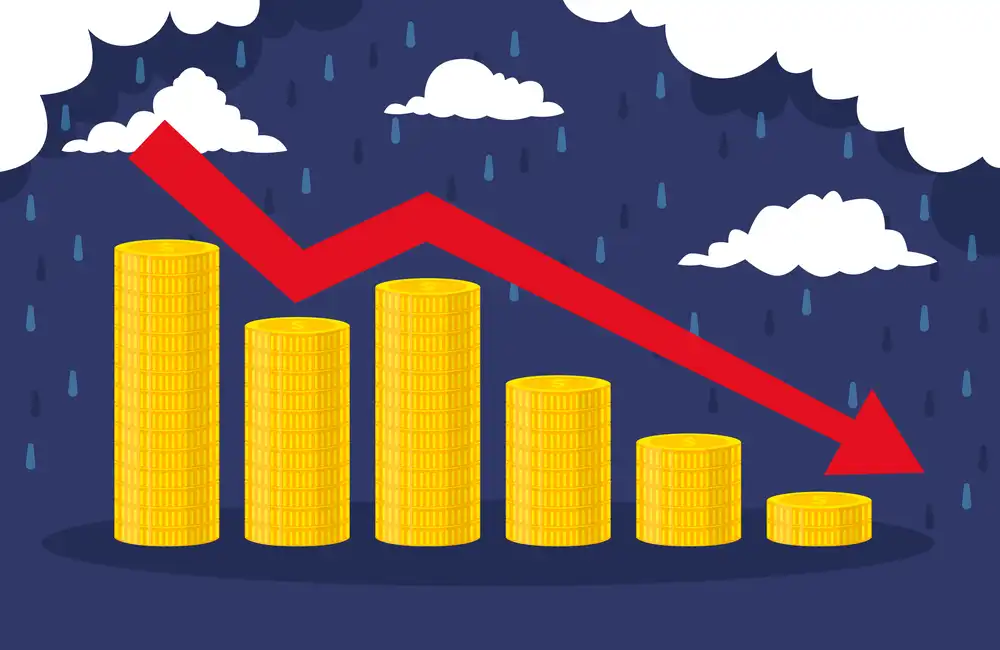The U.S. crude futures market showed significant volatility as prices declined more than 4% and fell below the $59-per-barrel benchmark.
The significant downturn in the market reflects growing worries about intensifying trade disputes between the United States and China. Investor confidence has diminished, and the future direction of oil prices remains uncertain due to these recent developments. The analysis presented in this article identifies the reasons for the current price decline while also exploring its broader impact on markets and the global economic landscape.
Tariffs and Tumbles
The current trade war between China and the United States continues to drive recent fluctuations in oil prices. The conflict escalated when Washington imposed 145% tariffs on Chinese imports, and Beijing retaliated with an 84% tariff on U.S. goods, leading to major trade disruptions.
Higher tariffs have had a cascading effect. March data from Kpler shows U.S. crude oil exports to China plummeted to 112,000 barrels per day, nearly a 50% drop from last year’s 190,000 bpd exports. The decline in trade activity resulted in U.S. crude stockpiles expanding by 2.6 million barrels last week, reaching nearly twice the predicted amount, according to Reuters.
Increased trade disputes have led to demand disruptions and greater market volatility. The price of oil futures experienced significant movement, with WTI falling to $60.07 per barrel and Brent crude reaching $63.33. Market sentiment remains heavily influenced by trade policies, which are creating increased investor anxiety, as reflected in price fluctuations.
Global Slowdown Signals
Oil prices are declining during a period of decelerating worldwide economic expansion. The latest economic indicators demonstrate a decrease in manufacturing output and more conservative growth projections, which affect sectors that depend on consistent oil demand.
The U.S. Energy Information Administration (EIA) has warned about a weak outlook for oil demand. Updated projections show that global oil consumption will expand by only 0.9 million barrels per day in 2025, less than the previous estimate of 1.3 million barrels per day. Following broader economic uncertainty, the EIA adjusted its Brent crude price forecast to $68 per barrel for 2025, lower than its previous forecast of $74 per barrel. The forecast indicates that oil prices will drop to $61 per barrel in 2026.
These economic modifications reveal the global economy's delicate state, which ongoing trade disputes and geopolitical instability have further strained. The decrease in oil demand creates difficulties for energy markets, potentially decelerating worldwide economic growth.
Navigating the Downturn
The consequences of falling oil prices affect multiple industry sectors. Energy companies face diminishing profit margins and reduced capital expenditures while experiencing growing demands to streamline operations. Investors face serious challenges with volatile commodity prices, which force them to reevaluate their investment portfolios and risk thresholds.
Businesses and individual investors must prioritise risk mitigation during these unpredictable times. Diversification remains a fundamental principle. Investors can mitigate the effects of oil price volatility by distributing their investments among asset classes like equities, bonds, and alternative investments. Investments tied to energy, such as renewable energy funds, present long-term portfolio protection options.
Consumers can find some positive aspects to the current market conditions. Decreased crude prices should reduce fuel expenses, providing essential relief from other inflationary challenges. The EIA predicts summer U.S. retail prices for regular-grade gasoline to average $3.10 per gallon, representing the lowest inflation-adjusted seasonal price since 2020.
Looking Ahead in a Volatile Market
Oil prices fell below $60 per barrel due to multiple factors, such as increasing trade tensions between the U.S. and China, worldwide economic difficulties, and growing market uncertainties. The energy market faces challenges, while the larger economy suffers from decreased oil demand.
The oil market will probably continue to experience significant instability shortly. Investors and businesses must attentively track geopolitical events, trade policies, and macroeconomic trends. The global energy market may be volatile because OPEC+ countries aim to increase their production output while new market shocks emerge.
Stakeholders throughout various industries must demonstrate quick adaptability and strategic planning to manage these challenges effectively. The present market landscape appears tough, but it offers opportunities to those who can take advantage of changes in market dynamics.




















